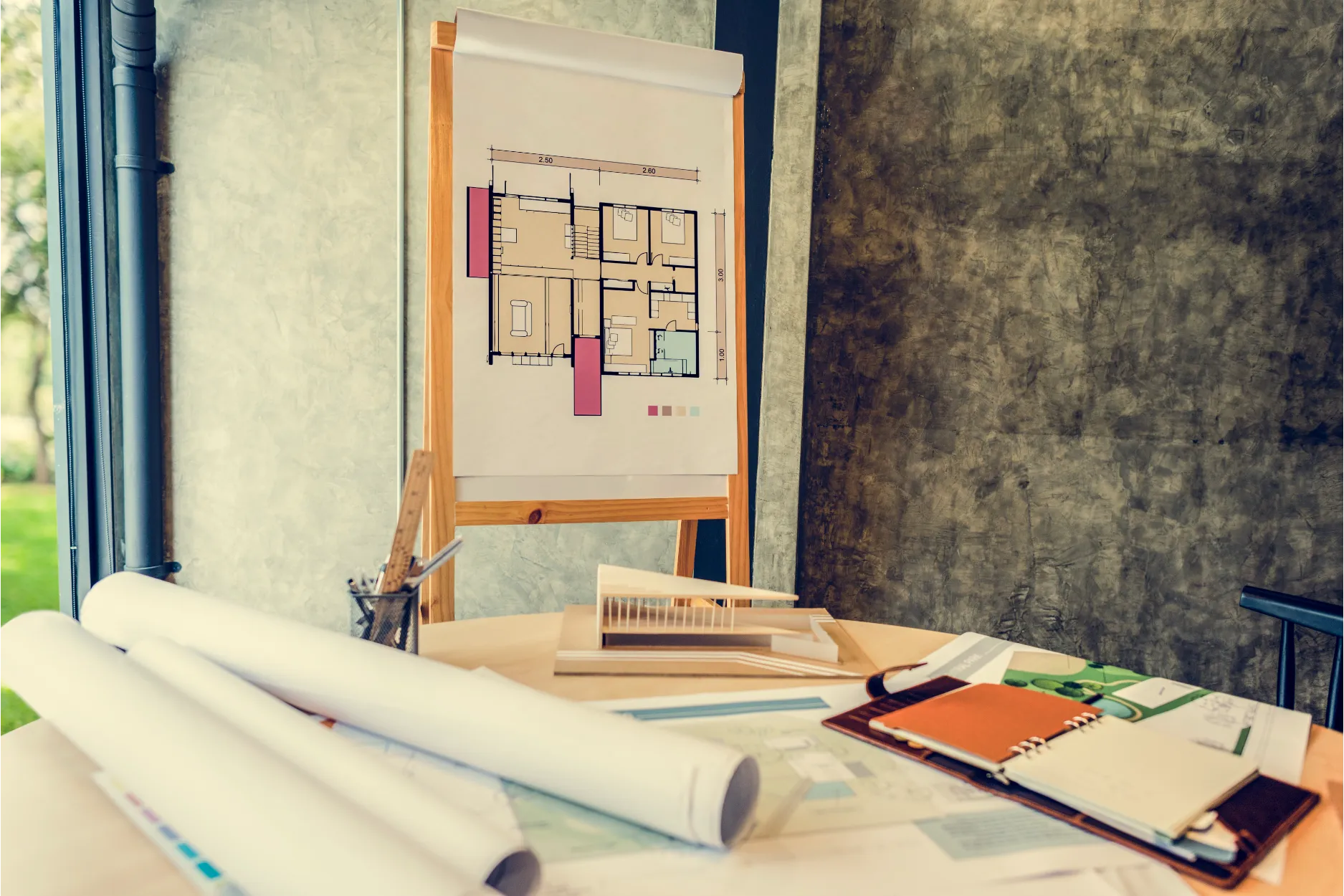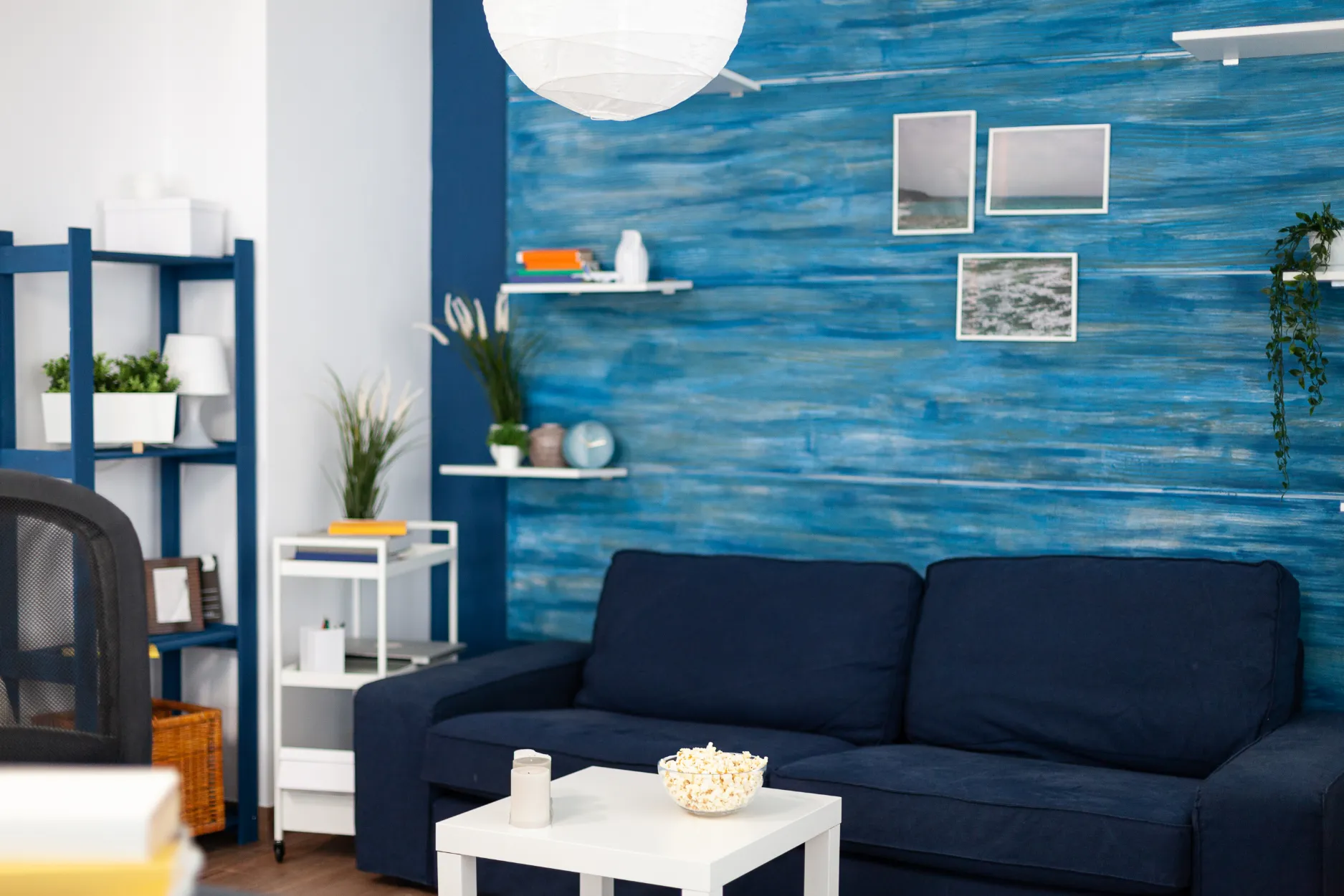
In the world of interior design, where innovation meets aesthetics, one element stands out as a silent yet powerful protagonist: texture. Imagine stepping into a room where the walls beckon to be touched, the furniture exudes a tactile allure, and the very air seems to carry a distinctive ambiance. This is the magic of textures at play, transforming mere spaces into immersive experiences. As the design landscape continues to evolve at a breathtaking pace, textures have emerged as the vanguard, ushering in a new era of creativity and style.
In this exploration, we embark on a journey to uncover the profound influence of textures on contemporary interior design. Beyond colors and shapes, it's the textures that resonate deeply within us, invoking emotions that can range from comfort and tranquility to excitement and inspiration. Recent advancements have propelled texture into the forefront of design innovation, introducing an array of novel materials that challenge our perceptions and redefine the very essence of the spaces we inhabit.
From sustainable woods that connect us to nature's wisdom, to smart textiles that weave technology seamlessly into the fabric of our surroundings, these materials are the threads of modern design's tapestry. We'll delve into the insights shared by design luminaries and trendsetters who recognize the pivotal role of these textures in shaping today's living spaces. As we traverse this landscape of innovation, we'll witness the harmonious marriage of tradition and modernity, where rustic woods coexist with sleek metals, and raw stone finds its place beside polished glass.
But this journey isn't just about admiration; it's about empowerment. As you read on, you'll discover how to infuse your personal spaces with the enchantment of textures. Whether you're drawn to the warmth of natural elements or captivated by the allure of minimalist futurism, these insights will guide you in crafting spaces that speak to your individuality. So, prepare to unlock the secrets of texture's transformative magic, and let's embark on this expedition through the intricate world of materials that shape the very essence of contemporary interior design.
Texture, often described as the unsung hero of interior design, possesses an unparalleled ability to shape the ambiance and personality of a space. Beyond the visual appeal, textures can evoke emotions, trigger memories, and even influence how we interact with our surroundings. Imagine entering a room where the walls embrace you with the warmth of exposed brick, or running your fingers across a smooth marble countertop that radiates luxury.
Research into the psychology of textures reveals their profound impact on our well-being. Coarse textures like rugged stone or distressed wood can create a sense of authenticity and connection to nature, grounding us in an increasingly digital world. Conversely, sleek surfaces such as polished metal or glossy glass can imbue a space with modernity and sophistication, appealing to our desire for innovation.
Innovative textures like 3D-printed fabrics, interactive wallpapers, and even sound-absorbing materials are rewriting the rules of interior design. These textures not only tantalize our sense of touch but also engage our other senses, blurring the lines between aesthetics and functionality. Imagine walls that not only showcase captivating patterns but also improve acoustics, making gatherings more intimate and conversations more meaningful.
The interplay of textures can be likened to the notes in a symphony, each contributing to the overall composition. Soft textiles like plush velvet combined with the roughness of exposed concrete create a tactile harmony that transforms a space into an experience. Incorporating a variety of textures allows designers to manipulate the narrative of a room, telling stories of comfort, innovation, or perhaps a blend of both.
In our pursuit of the perfect interior, it's essential to recognize the pivotal role that textures play. As we delve deeper into this exploration of materials, prepare to be inspired by the world of textures that are pushing the boundaries of design. From organic elements that embrace our connection to nature to futuristic materials that propel us into the digital age – the textures shaping contemporary interior design are more than just surfaces; they are the stories we touch, feel, and live in.

In the dynamic world of interior design, the very essence of spaces is undergoing a textural revolution. This transformation is fueled by a daring exploration of new materials that redefine the way we experience our surroundings. The digital age has birthed a generation of designers who are unafraid to push the boundaries, resulting in the emergence of awe-inspiring textures that marry form with function.
Imagine stepping into a room where the walls seem to breathe and respond to your touch – this is the magic of smart textiles. These futuristic fabrics have embedded sensors that react to environmental changes, adjusting their texture and appearance. The interplay of light, temperature, and touch gives rise to an ever-evolving canvas that's both visually striking and incredibly immersive.
The quest for sustainability has led to a profound shift towards materials with a conscience. Sustainable woods, once overlooked in favor of more conventional options, are now stealing the spotlight. These woods are harvested responsibly, ensuring minimal ecological impact while adding an element of raw authenticity to interior spaces.
Complementing this trend is the rise of bioplastics – innovative materials derived from renewable sources like cornstarch. These versatile bioplastics can be molded into intricate textures, showcasing the potential of nature-inspired design to harmonize with modern sensibilities.
But it's not just about individual materials; it's about the unexpected harmonies they create. The fusion of contrasting elements is giving rise to interiors that resonate with depth and complexity. The juxtaposition of sleek, metallic finishes against the rugged warmth of reclaimed wood speaks to a new design language. This language is one of balance, where each texture complements the other, resulting in a space that tells a story of harmony between tradition and innovation.
As you embark on your own design journey, don't shy away from these emerging textures. Let them be your muse as you craft spaces that are not just visually stunning, but also environmentally conscious and emotionally resonant. The palette of textures available to us today is a playground of possibilities, inviting you to shape interiors that redefine the very essence of design. So, take cues from this exploration of materials and infuse your creative ventures with the captivating textures of tomorrow.
In the dynamic world of interior design, where innovation knows no bounds, the fusion of tradition and modernity has emerged as a captivating trend that's reshaping living spaces. This design approach weaves a mesmerizing tapestry by seamlessly blending the time-honored charm of traditional textures with the sleek allure of modern materials. The result? A harmonious symphony that resonates with both nostalgia and the cutting edge.
Imagine stepping into a living room where a rustic wooden beam runs parallel to a gleaming stainless steel column, creating a visual dance that captures the essence of two different eras. This contrast-driven design is no mere collision of elements; it's a thoughtful curation that marries the warmth of history with the confidence of contemporary aesthetics.
We've all seen how a weathered brick wall can transform a space, infusing it with character and history. Now, picture that same wall adorned with minimalist, transparent shelves showcasing avant-garde sculptures and vibrant succulents. This juxtaposition elevates the traditional texture to a new level, transforming it from a backdrop to a focal point that effortlessly blends with the present.
The fusion doesn't stop at textures alone. Traditional furniture silhouettes, with their ornate carvings and plush upholstery, find themselves sharing space with modern, abstract art pieces. The result is an intriguing dialogue between intricate craftsmanship and bold, abstract expressionism.
While this fusion invites experimentation, it's not without its challenges. Achieving a harmonious balance requires a discerning eye and a deep understanding of the historical and cultural context of the materials at play. However, when done right, this blend of tradition and modernity yields spaces that feel both timeless and cutting-edge, comforting and invigorating.
Incorporating this trend into your own space might mean pairing a vintage Persian rug with sleek, geometric furniture. Or perhaps it involves installing contemporary lighting fixtures against the backdrop of exposed brickwork. The possibilities are as boundless as your creativity.
As you embark on your fusion journey, remember that design is an art of juxtaposition. By thoughtfully uniting textures that tell tales of the past with those that speak of the future, you'll craft interiors that transcend trends and stand as unique reflections of your personal style.

Bringing the world of innovative textures into your own living spaces might seem like a design leap, but with a few expert tips and a dash of creativity, you can embark on an exciting journey of transformation. Here's how to infuse your surroundings with the captivating essence of textures:
A. The Palette of Possibilities: Start by envisioning the mood you want to create. Are you drawn to the rustic warmth of reclaimed wood or the sleek elegance of polished metals? Let your intended atmosphere guide your material choices.
B. Accent Walls with a Twist: One of the simplest yet impactful ways to introduce textures is through accent walls. Consider covering a wall in textured panels like embossed metal or 3D tiles. These panels not only add visual interest but also create a tactile experience that engages your senses.
C. Softness Underfoot: Rugs and carpets are fantastic tools to experiment with texture. Opt for a plush shaggy rug to juxtapose against smooth surfaces, or go for a woven jute rug to introduce an organic touch. Remember, textures extend beyond sight, enriching your space's tactile dimension.
D. Layering for Depth: Play with layering different textures within a single space. Complement the hardness of concrete floors with the softness of velvet cushions. Mix and match textiles, furniture finishes, and decorative items to create a rich and inviting environment.
E. Artful Accessories: Small details can make a big impact. Integrate accessories that showcase unique textures—a hand-carved wooden bowl, a metallic vase with intricate patterns, or a woven tapestry on the wall. These pieces not only add depth but also tell a story through their textures.
F. Nature's Texture: Embrace the natural world's textures by incorporating indoor plants. Their leaves stems, and even the pots they come in bring a refreshing blend of organic textures into your space. Plus, the vibrant greens add a pop of color that complements the textures beautifully.
Remember, there are no strict rules in texture exploration. Let your personal style guide you and be open to unexpected combinations. As you experiment, keep in mind the balance between different textures and how they interact with your chosen color palette. With a bit of daring and a touch of finesse, you'll find that textures are the secret ingredient to transforming your living spaces into captivating, multi-dimensional realms.
Read Also: Parallel Reality vs. VR: Exploring 5 Key Differences Shaping the Future of Immersive Experiences
In the vibrant tapestry of interior design, textures emerge as the unsung heroes, weaving emotions, memories, and experiences into the spaces we inhabit. As we've delved into the innovative materials shaping contemporary design, it's clear that textures hold the key to unlocking the full potential of our surroundings.
From the warm embrace of reclaimed wood to the sleek elegance of polished concrete, these textures not only invite our touch but also stimulate our senses, transcending the visual realm. The marriage of tradition and modernity ignites sparks of creativity, reminding us that contrasts can coexist harmoniously to create captivating narratives within our living spaces.
As we gaze towards the horizon of innovation, a beacon of light shines brightly: Twinn Vision. This visionary platform stands at the forefront of the decor industry, offering a holistic solution that empowers manufacturers, distributors, and retailers to navigate the immersive 3D landscape with unparalleled ease.
So, embark on this textured adventure, and watch your surroundings come alive with newfound depth. The materials may be modern, but the essence they infuse into your spaces is timeless. As the symphony of textures plays on, let your imagination be the conductor, guiding the elements to compose a masterpiece of design that reflects you.
FAQs
Minimalism is a key principle in space optimization, advocating for "less is more." By removing clutter and focusing on essential items, minimalism creates cleaner, more open spaces. This approach promotes a sense of tranquility, allowing each element to shine and making rooms feel uncluttered and expansive.
Natural light plays a pivotal role in space optimization by creating an illusion of spaciousness. Well-placed windows and mirrors can bounce light around, making rooms feel larger and more inviting. Maximizing natural light not only enhances the overall ambiance but also contributes to a sense of openness.
Space optimization in modern interior design refers to the strategic utilization of available space to maximize functionality, aesthetics, and comfort. It involves innovative techniques like open floor plans, multifunctional furniture, and creative storage solutions to make the most of limited living spaces.